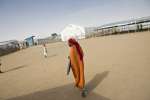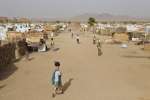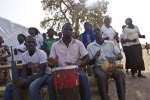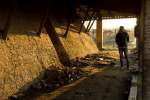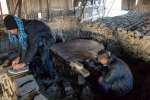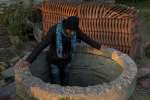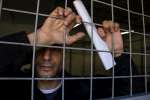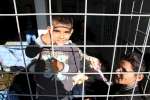Address by Mr. António Guterres, United Nations High Commissioner for Refugees, to European Union Justice and Home Affairs Ministers, Brussels, 6 December 2007
Statements by High Commissioner, 6 December 2007
Thank you for inviting me to be here today. I am pleased, both as High Commissioner and as a European, to have this opportunity. The European Union is a very relevant partner for UNHCR. Europe is a continent of asylum. The emerging Common European Asylum System is an important piece of architecture. The European Commission and the Member States, taken together, are a major partner for us – both in financial and political terms – in many different situations around the world. The EU decision to send a force to Eastern Chad to preserve humanitarian space there is just one example of this relevance.
Today, I would like to address two inter-related topics: the Common European Asylum system and the nexus between asylum and migration. I will speak both as High Commissioner and as a citizen of Europe.
On a continent without borders, it does not make sense to have 27 different asylum systems. Moreover, asylum is a key component of democracy. We therefore strongly support the effort to create a common asylum space in the European Union. We were happy to take part in the discussions around the Commission's Green Paper on the future of the Common European Asylum System, and we are looking forward to the Commission's forthcoming Policy Plan. This is a good time to be talking about how to build a Common European Asylum System, because we are not under particular pressure. The number of asylum applications in Europe will, we expect, fall again this year by around 5%. Over the past 5 years, asylum applications have dropped 55% in Europe.
On a continent without borders, it does not make sense to have 27 different asylum systems.
High Commissioner António Guterres
We have three main concerns with respect to the emerging Common European Asylum System: access, quality and consistency.
First of all, it is essential to make sure that the system is accessible. By this I mean that the European territory must be physically accessible and individuals must also have access to asylum procedures.
Secondly, on quality, we must make sure the system is not built around the lowest common denominator. This applies to decision-making but also to the rights enjoyed by refugees and the way in which countries support their integration.
Thirdly, quality is not sufficient unless there is consistency. When we look at how the Qualification Directive is being implemented, we see differences from country to country. UNHCR recently carried out research into the implementation of the Qualification Directive. We looked at 1,500 individual asylum cases. We found little consistency. For instance, in the case of Iraqi asylum-seekers, we saw that the chance of getting refugee status can range from zero to nearly 100%, depending on where they apply. For Somalis, Sri Lankans and others, we observed very different prospects of getting protection. This situation creates tensions and drives irregular movements. It also puts into question the rationale of the Dublin II Regulation. The challenge is to achieve consistency without having convergence around the lowest common denominator.
The challenge for a common European asylum system is to achieve consistency without having convergence around the lowest common denominator.
High Commissioner António Guterres
I am aware that many Member States have not yet finalized their transposition into national law of the Asylum Procedure Directive. But let me say that we are ready to co-operate with the Commission and Member States to carry out a study on the implementation of the Asylum Procedure Directive, similar to the Study we conducted on the Qualification Directive.
Also, we are very committed to supporting the Commission's efforts to sensitize Member States to the importance of refugee resettlement. Europe has a tradition of asylum, but not of resettlement. Only a few European countries have a tradition of resettlement. Resettlement is needed, even in situations where large numbers of refugees are returning home, there will always be some who cannot go back. If you are an Iraqi refugee and your family has been killed, will you return? What about the Bhutanese in Nepal – they have been stranded in camps for decades. Resettlement is an important opportunity to offer solutions. Some European countries have resettlement programmes; I am pleased that my own country, Portugal, has just established one. Others are thinking of doing so. We would like to see a European resettlement programme.
Now I would like to turn to what we have called the "asylum-migration nexus". I am convinced that a European asylum system can be developed with full regard to the concerns of States about security – there is no contradiction between refugee protection and security – and with full regard to migration policy. Indeed, it will be harder to achieve a common European migration policy.
People are on the move today for a variety of reasons. We are seeing more and more irregular migratory flows consisting persons whose motivations are varied. A key element of the Dialogue which I am convening in Geneva on 11-12 December is a discussion about how to detect and ensure fair treatment of those who are seeking protection in the context of mixed flows, whether in the Mediterranean, the Caribbean, the Gulf of Aden, or along Europe's Eastern border. This is not always easy. We are willing to cooperate in this, and have some case studies of good practice, such as with Italy and Spain, which show that it is possible to have a system which guarantees a high level of protection, while respecting the interests of the state.
At the same time, we need to build not only our own capacity to deal with mixed flows, but also the capacity of transit countries and countries in regions of origin. Although we often look at this problem from a North-South perspective, there is also a South-South dimension of migration – for instance, the flows from Zimbabwe to South Africa, or in Central Asia. Building refugee protection capacity is important, but it is also important not to give countries of transit or those in regions of origin the impression that we are shifting the problem to them. The EU's Regional Protection Programmes and our own Strengthening Protection Capacity Project are examples of ways to proceed.
I agree that agreements between countries of destination, transit and origin are needed. But a key concern – for instance in the context of rescue and interception at sea – is to make sure that protection can be granted to those who need it. There are countries close to Europe where detention is a serious problem and where conditions for protection do not exist.
It is not enough to have protection-sensitive border management. The 21st century is the century of people on the move, with 200 million international migrants already. Forced displacement is taking on new patterns. The traditional refugee flees because of war and persecution. We have a near-global consensus around the 1951 Refugee Convention. Yet more and more we see a mixture of causes: poverty, environmental degradation, climate change and war are increasingly interlinked.
The situation in Darfur is a good example of this. Yes, it is a political crisis. But it also reflects 20 years of declining rainfall and increasing population. It reflects tensions between farmers and herders. When the Janjaweed – who are herders – attack a village (of farmers), they are also securing water sources for their herds. Drought will increase in the Sahel region and across East Africa. Some areas will be depopulated as people move in search of livelihoods. This will increase the chances of conflict in already unstable areas. Border management mechanisms will not suffice.
We need policy linkages, policy coherence. For instance, between foreign and security policy, development cooperation, and immigration policies. Development cooperation is rarely linked to the vulnerability of a given population to displacement. If one invests in extractive industries, for instance, this may not enhance the possibility for people to remain in their areas of origin. If one invests in agricultural development, the picture might be better. Nor is development cooperation yet adapted to climate change issues.
We also need to create opportunities for legal migration. The Council Conclusions on the Global Approach to Migration are a start. We need real possibilities of legal migration, and these have to be linked to development cooperation. We will not be able to handle forced displacement without coherent policies, which respect the rights and wishes of the persons concerned, including their protection needs, as well as the interests of states. There is a way to do this, but it requires consistency and a unifying vision.
A final remark before concluding: the trafficking of humans beings is a horrendous crime. Public opinion in our countries is still more sensitive to drug trafficking than to people trafficking. I can understand this. We do not fear that our own children might be vulnerable to being trafficked, but we do fear that they might be vulnerable to drugs. Yet look at the coast of Yemen. Terrible crimes are being committed by transnational criminal groups. Without a global commitment, it will not be possible to defeat these gangs. I appeal to Ministers of Interior to consider this as a key priority.
In conclusion, I believe that we need a global vision to address population movements in the 21st century, and I believe that Europe has a major contribution to make. Thank you for your attention.
















